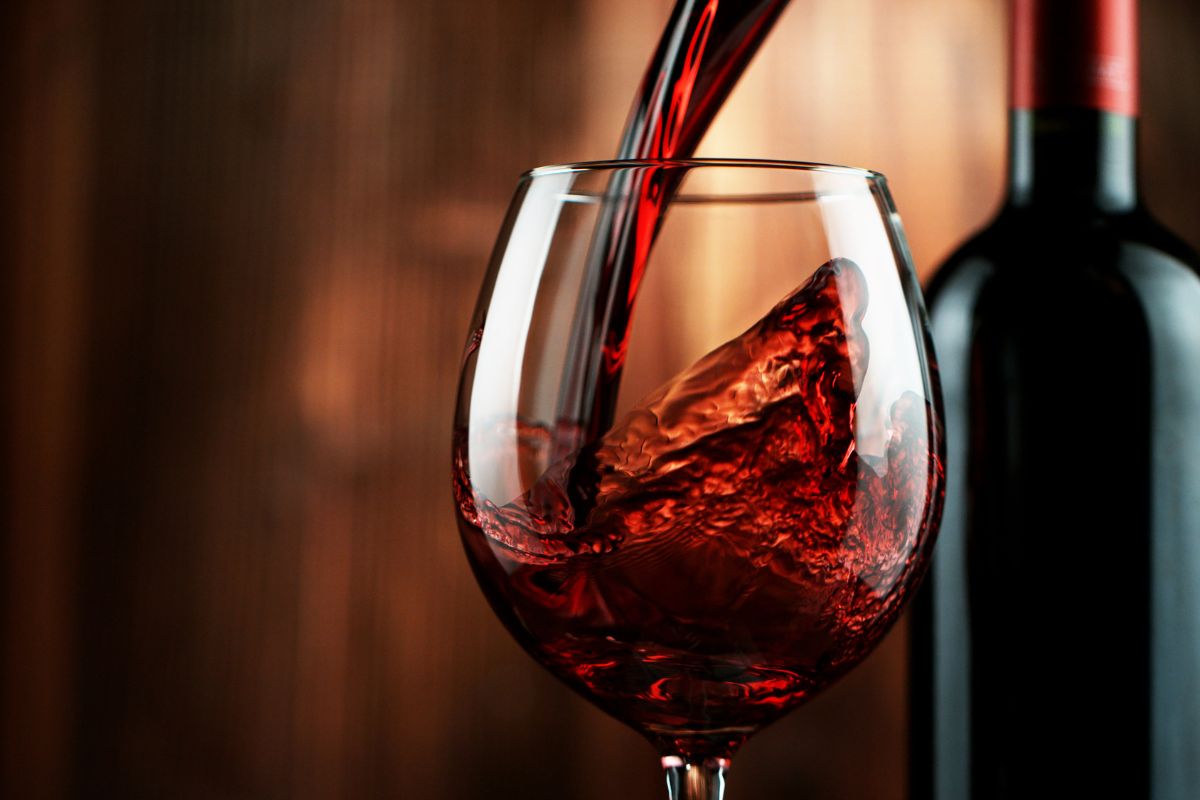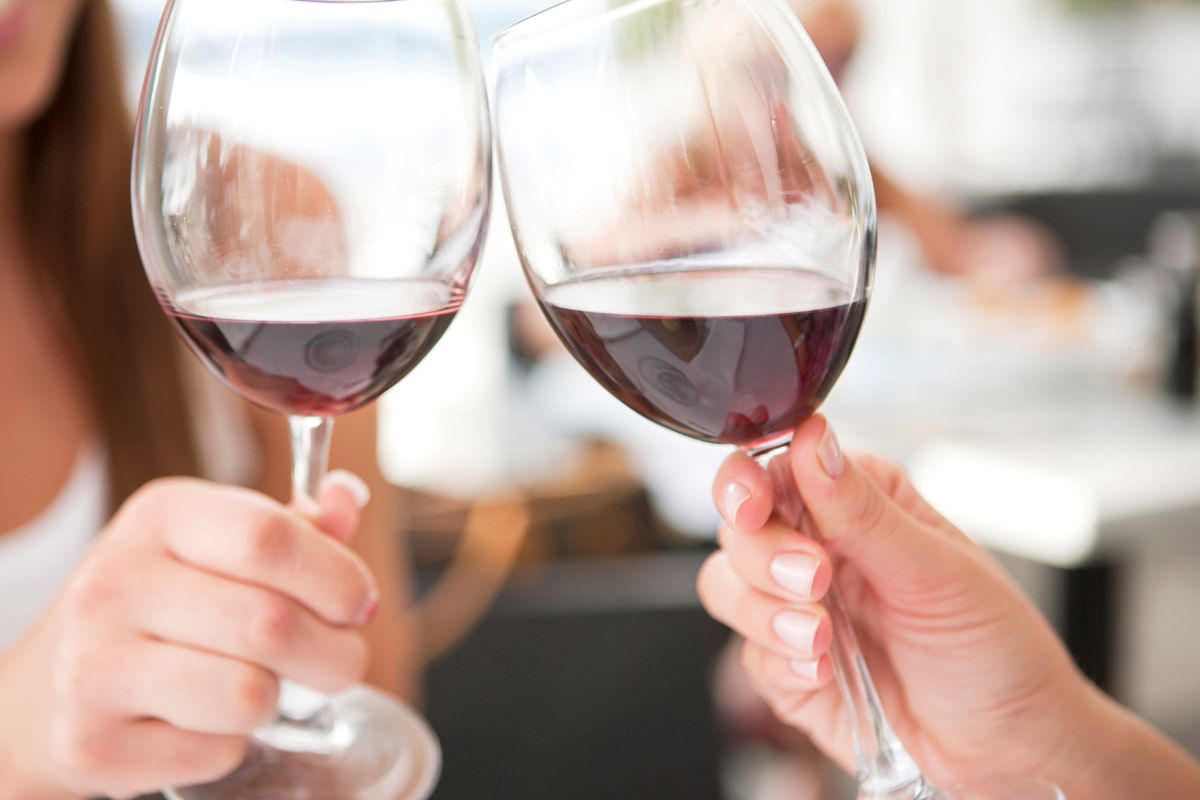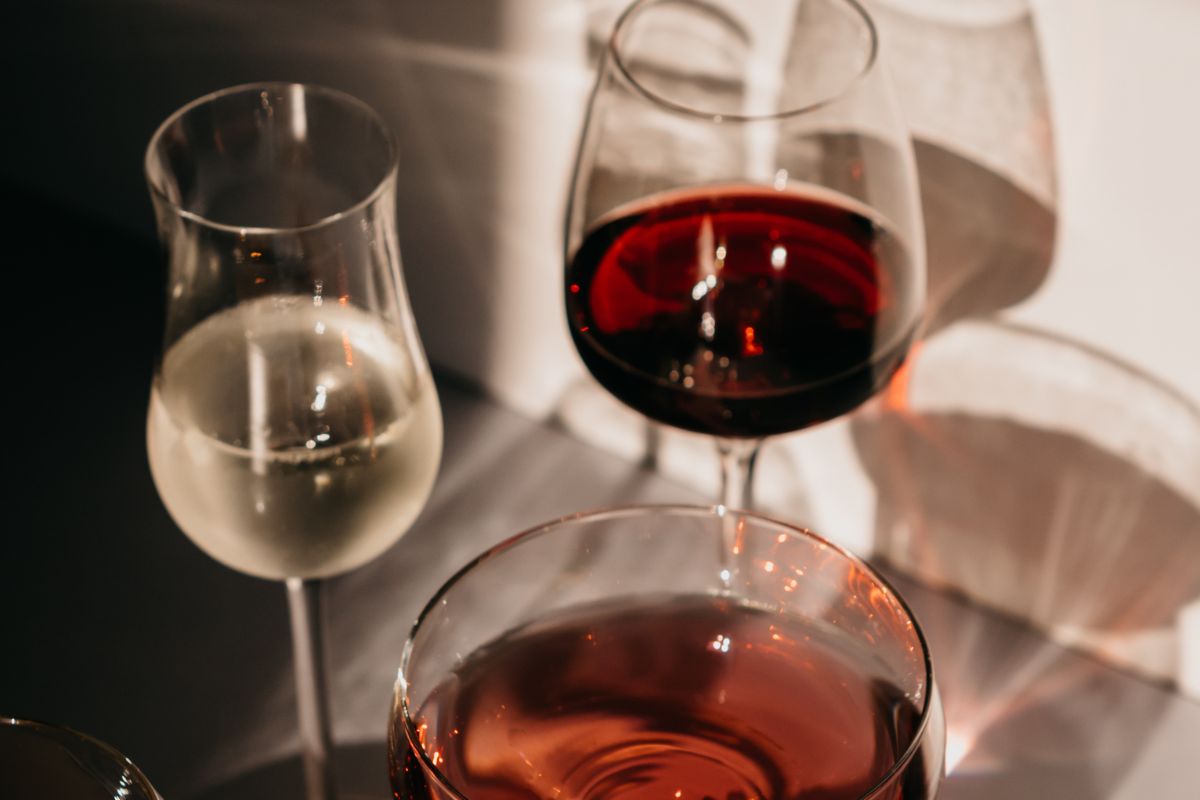If you enjoy your wines then you may have heard of Chambourcin.
Chambourcin is a variety of red grapes, which is also often known as Seyve 2605. It is a hybrid grape made from a merging of the European grapevine and the American grapevine.

This makes it a French hybrid.
The wine it produces is aromatic and dark, however, it is unlike many other hybrid grapes as it has 0 Fox tone.
However, according to the regulations set by the European Union, this grape variety is not officially approved just yet.
Let’s take some time to learn more about it, shall we?
Chambourcin: What Is It?
Chambourcin is a fairly new and young breed, and amazingly, the exact year it came to be is not known.
However, what is known is that it was a part of a partnering of two breeds; the St. Vincent, and the Regent.
The Chambourcin is named after the Bouge-Chambalud commune in Isère, a French department.
This red grape variety ripens late, but it delivers very high yields and is very vigorous.
It also has a high resistance to any downy mildew, although its resistance is not quite as strong to powdery mildew, or black rot. Yet, the level of resistance it does bear is useful.
Yet, this grape does not cope so well with droughts, and it grows best in warm, and humid environments.
Dark and aromatic wines, aside from ones with Foxton, can easily be made using Chambourcin.
The flavor profile that comes from this grape typically includes plum, black cherry, herbs, and spices.
Chambourcin is quite popular outside of France and is enjoyed a great deal in Canada, Australia, and different states in the U.S.
Merlot, Cabernet Franc & Chambourcin
Cabernet Sauvignon is a very popular wine that is characterized by its cedarwood and cassis odor, one which comes with the flavors of spices, licorice, green peppers, and dark berries.
This wine comes with a very deep red color to it, and it is extremely tannic.
This wine is a very good partner for other wine types, which is why it is considered to pair well in a cuvee.
Both Chambourcin and Cabernet Franc are hybrid red wines that originate in France.
Merlot, on the other hand, is a very intense and garnet-type colored wine. If Merlot has been matured in an oak 225-liter barrel (barrique) then it may even be a ruby red color.
Whichever may be the case, Merlot will often sparkle in a glass when poured if a bright light lands on it.
The bouquet of Merlot is very pleasant and very powerful. Its velvet-soft characteristics also make it ideal for a cuvee.
Merlot has a harmonious taste, one of the many factors that makes it so highly valued. It also has a dark character that provides delicious aromas.
Merlot is like both Chambourcin and Cabernet Franc, as it is a French red wine.
Characteristics Of Chambourcin
Chambourcin is pronounced as ‘Sham-bore-sin’, and it is a lot like Merlot in how it ripens late, but has strong growth and a plentiful yield.
This means it is quite significantly suitable in some of the more southern locations.
Chambourcin needs to have a strong base for these reasons.
The grape of Chambourcin is quite large, but it is more or less compact as well and does often have small berries that are insufficiently fertilized. The yield also needs to be regulated for the benefit of high quality.
The alcohol content of this wine tends to be around 13 to 14%.
Its color is a deep red, and the wine itself is very aromatic. It is also possible to make this wine with a moderate residual sugar content, or dry.
Its juice is a bit of a pink color, rather than red, and it is less often clear, a bit like a majority of the red Vitis vinifera types.
The red juice has been fermented over redskins, and it will make a strongly flavored wine.
A majority of red wines are served at room temperature, which enhances the flavor.
Yet, some Chambourcin wines have a flavor so potent that it is recommended that you serve them chilled.
This is a full-bodied wine, with a Mediterranean character. In some ways, it is similar to Merlot, but even as a young wine, it can still be a little bit rough.

Taste Of Chambourcin
The taste profile of Chambourcin is typically described as being a deep-colored, aromantic wine crafted from teinturier grapes.
All this means is that the juice is typically pink or red, making it, unlike a majority of red wines, which tend to be clear.
Some winemakers will use oak in the process of making wine, they do this to make the wine less acidic, which is often done in colder climates.
The alcoholic percentage of this type of wine is often around 13 to 14%.
This wine has fairly modest tannins, as well as a strong flavor that is highly acidic, it can be enhanced if you age it in an oak barrel.
The taste of Chambourcin is typically seen as being fruity, with notes of black pepper, black cherry, chocolate, and some herbaceous notes as well.
Chambourcin can also be used as a blend or as a single variety, making it rather versatile. It often goes well blended with Shiraz.
You may even find it included in a bottle of sparkling red wine, or semi-sweet wine!
However, it is recommended that this wine only be consumed young, as it has a freshness that is typical of wines like this, and it is the best when drunk chilled due to the generally strong Chambourcin flavoring.
Age & Chambourcin
Chambourcin red wine is typically fermented in small bins of 1 ton.
Once fermentation is done, the grape can stay in place for another 2 to 3 weeks or so. This technique is known as extended maceration.
This can extract phenolic compounds from these grapes and can give this wine even more structure and palate length.
The grapes will then be pressed and transferred to a barrel for 24 months or so.
The barrels typically chosen for this are new American oak barrels. These barrels can add extra tannins to the wine.
Which Regions Are Known For Chambourcin?
This wine is growing in a vastly different number of regions in the world.
As it is considered to be a productive grape, it is also typically grown in regions that are quite humid.
Let’s take a moment to consider some of the most common regions for this grape.
Australia
Chambourcin is widely grown in Australia, especially in the humid regions of New South Wales along the coast, as well as the Hunter Valley region and Queensland.
The pioneer of this Australian variety is John Cassegrai in the region of the Hastings River.
In some varieties here you can also find that ‘foxy’ flavor that is also found in American Vitis varieties, and some hybrids.
North America & The United States
The North American variety of grapes is grown along the mid-Atlantic region. You can find it growing in New Jersey, New York, and Pennsylvania.
However, there are some other areas where Chambourcin is grown.
Some of these include Kentucky, Washington, Kent County, Virginia, Delaware Roane, the Mississippi Delta AVA, Haw River Valley in North Carolina, Shawnee Hills in southern Illinois, and so on.
Canada
Some vineries for Chambourcin can be found in Ontario, Harrow, and Ruthven, as well as Kelowna.
The Most Popular Chambourcin Blends

There are a great deal of wines that are all 100% Chambourcin ABV pure, meanwhile, there are plenty of others that have been blended with other varieties.
One of the most common blends is Chambourcin with Pinot Noir.
However, there are plenty of other blends, let us take a look at a few.
Butler Red Select
This is a light and fruity red wine, made from a blend of Chambourcin and Vidal Blanc.
This is a bit like if you were to blend 3 fruits together to create a sweet wine, with notes of fresh cherries and black raspberries.
Butler Variant
This blend is made with Chambourcin and Marquette, made in an old-world style. It is aged in French oak wood barrels and has notes of cherry, with additional herbal aromas.
Fletched
The fletched blend is a mixture of 3 different varieties, Chambourcin, blackberry, and Vidal Blanc.
It is similar to what you might expect if you were to blend 3 fruits to craft a sweet wine. It comes with notes of cherries and black raspberry.
Pinnacle Ridge Quaff
This is a semi-sweet wine that is made from Chambourcin, Syrah, and Pinot Noir.
It only has 2% residual sugar, and it pairs well with pizza. This is why it is often referred to as a ‘Pizza wine’.
Winter Blend
This is an apple and Chambourcin blend, and it is very sweet. It has the taste of ripe cherries and apples when it is warm.
How Should You Enjoy Chambourcin?
Chambourcin is at its peak when it is consumed at the preferred temperature to serve, and if it is in the correct stemware then it should come with aromas and flavors when paired with the correct foods.
There are some universal rules when it comes to drinking red wine.
Let’s consider some food pairings.
- Enchiladas make for a good Chambourcin pairing, it is not easy or quick but the mushroom and the chocolate flavors from each mix well together.
- Consider an Australian sausage sizzle. This is popular in Australia, and it is very simple to make. Best served with Chambourcin which has been chilled slightly.
How Does Chambourcin Get Made?
Much like any wine, Chambourcin has to go through a multitude of processes to be made into wine.
Different winemakers will make this wine differently, but several typical steps are typically followed.
- The harvesting of the grapes begins the process. These grapes must be as ripe as possible. They also must be brought safely and speedily from harvest to processing, as the berries can react and burst fast in response to chemicals and oxygen.
- The grapes then need to be de-stemmed, this is not always done, but for the most part, there is less stemming used in red wine production than for white wine production.
- Mashing is done next, which is when the berries are crushed. The skin, seeds, and juice of the berries are mashed for a short time. The aromas and colors will dissolve, and when a certain temperature is met, the fermentation process will start.
- Fermentation is the next part, red wine is often fermented on the mash, which creates a carbonic acid and an alcoholic acid. The fermentation can happen randomly, due to natural yeasts. The resulting acid drives the mixture to the surface on repeat.
- Then the press occurs, which helps to separate the wine from the solid parts of the mix. The flow, which is the part that runs off without pressure, gets removed, then the rest is pressed. This is typically kept separately as it is high in tannins. Later on, this part can get blended with a pre-run wine to have a strong tannin structure.
- Finally, once fermentation is done, the wine is separated from the dead yeast, which aids in filtration and clarification.
Overall
Chambourcin is a unique wine though it shares some similarities with Merlot and Cabernet Franc.
It is a red wine that has a dark berry taste that can be made in a multitude of ways.
You can enjoy it at room temperature like any other red wine, or some can be enjoyed chilled!
Do not forget, however, that technically this grape variety has not been approved officially by the EU as yet.
It is a young breed and has been involved in the cross-partnering of vine breeds.
- Why Does Wine Taste Better With Age? - June 14, 2023
- What Does It Mean When A Bottle Of Wine Is Corked? - June 14, 2023
- Wine Fridge Vs Wine Cellar – Which One Should You Choose? - June 14, 2023
